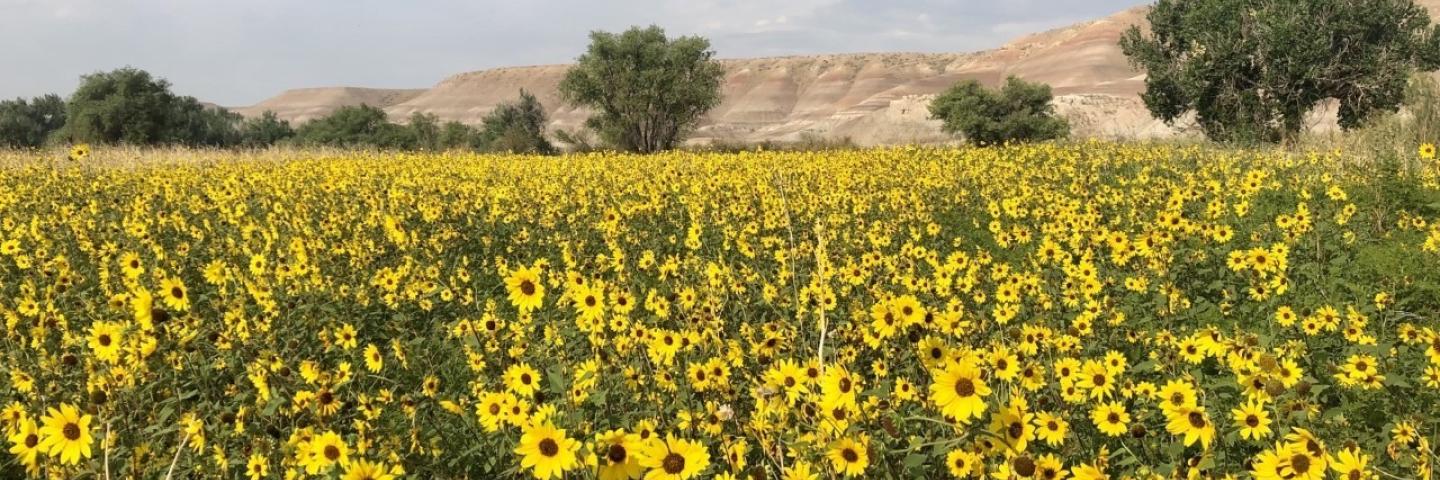Celebrating Earth Day and Conservation on Utah’s Farms and Ranches

Celebrating Earth Day and Conservation on Utah’s Farms and Ranches
SALT LAKE CITY, April 22, 2022 – The USDA’s Natural Resources Conservation Service (NRCS) is celebrating Earth Day and its conservation work across Utah. The agency helps farmers, ranchers, and forest landowners implement voluntary conservation practices on their agricultural lands, which help conserve natural resources such as soil, water, plants, and wildlife. NRCS also helps communities with their urban gardening.
“From butterflies to bees, there’s a variety of plants that will attract these beneficial insects to gardens,” said NRCS Utah State Conservationist Emily Fife. “Especially for Earth Day, I encourage everyone in our Beehive State to invite pollinators into your garden.”
Pollinators are essential to our environment. The ecological service they provide is necessary for the reproduction of nearly 75% of the world’s flowering plants and is fundamental to agriculture and natural ecosystems. Pollinators are ultimately responsible for the seeds and fruits that feed everything from songbirds to black bears. Establishing pollinator habitat is one of many voluntary conservation practices that NRCS Utah recommends.
In recognition of Earth Day, these are a few key NRCS Utah highlights from 2021:
Urban Ag: NRCS Utah funded 58 high tunnels. High tunnels are the primary practice that Utah urban farmer are interested in. Also known as hoop houses, this structure will modify the growing climate and allow tender varieties of vegetables, herbs, and berries to grow where they otherwise may not. Made of ribs of plastic or metal pipe covered with a layer of transparent plastic sheeting, manufactured high tunnels are easy to install, maintain, and move. Most high tunnels are designed with nonelectric venting options. It is noted that plants must be planted in the ground and not containerized. NRCS Utah hired two urban conservationists and they are located in Ogden and Provo.
Environmental Quality: NRCS Utah invested more than $25 million through the Environmental Quality Incentives Program (EQIP) to install voluntary conservation practices on ag land. Utah’s fund pools prioritize practices that improve carbon sequestration and soil heath which increases water holding capacity in cropland soils. Last fiscal year, Utah farmers installed 231.8 acres of micro irrigation, 5,105 acres of efficient sprinkler systems, 101 acres of sub surface irrigation, 67.1 acres of conservation cover, 579 acres of conservation crop rotation, 3,785.9 acres of cover crop, and 836.2 acres of reduced tillage.
Conservation Easements: NRCS Utah closed easements on 101.73 acres in the Agricultural Conservation Easement Program (ACEP). This effort preserves and protects agricultural lands from rapid development pressures in Utah.
Partnerships: The Regional Conservation Partnership Program (RCPP) continued to rally partners to help increase the reach of conservation and support the development of new tools, approaches, practices and technologies to further natural resource conservation on private lands. Last fiscal year, NRCS Utah and partners preserved over 1,500 acres of ag land. These easements will be implemented along critical habitat corridors and important watersheds providing the Wasatch Front with drinking and irrigation water. While NRCS Utah has not closed easements under RCPP yet, there are signed agreements to work with partners to obtain easements.
Equity: NRCS Utah contracted 197 contracts with historically underserved (HU) participants. The HU contracts totaled $8.6 million, which was 25.9% of Utah’s Farm Bill allocation. Of the 197 contracts last fiscal year, 148 contracts were in EQIP, 35 contracts were in Agricultural Management Assistance, 12 contracts were in Conservation Stewardship Program, and two contracts were in RCPP. Additionally, NRCS Utah invested $7.91 million to Beginning Farmers and Ranchers with 182 contracts, $.59 million to Socially Disadvantaged with 13 contracts, $345,500 to Veteran Farmers and Ranchers with 13 contracts, and $764,600 to Limited Resource Farmers and Ranchers with 12 contracts.
To learn more about how NRCS Utah can help you, visit www.ut.nrcs.usda.gov.

